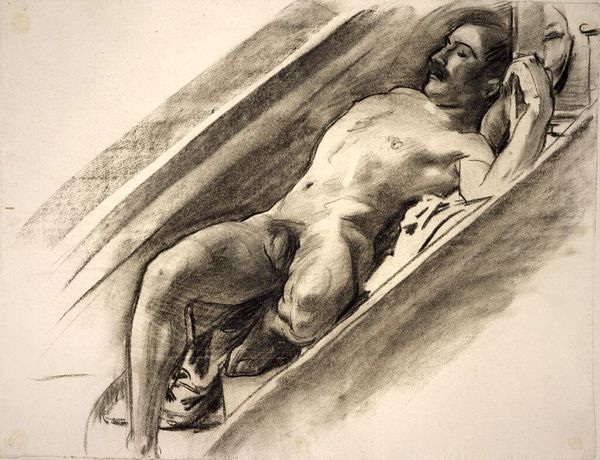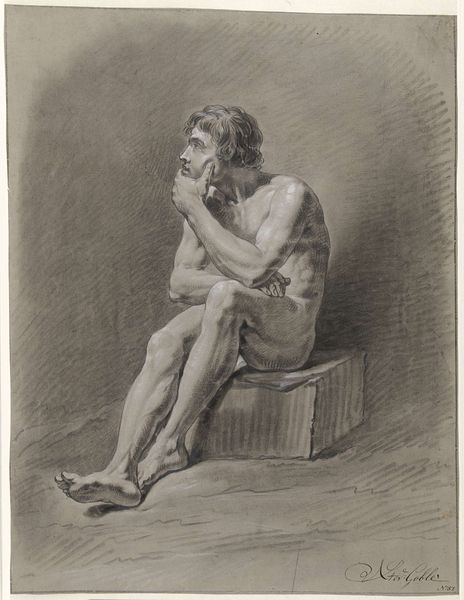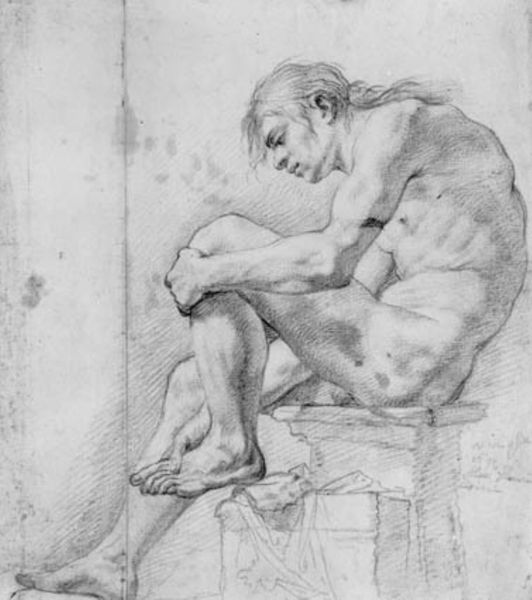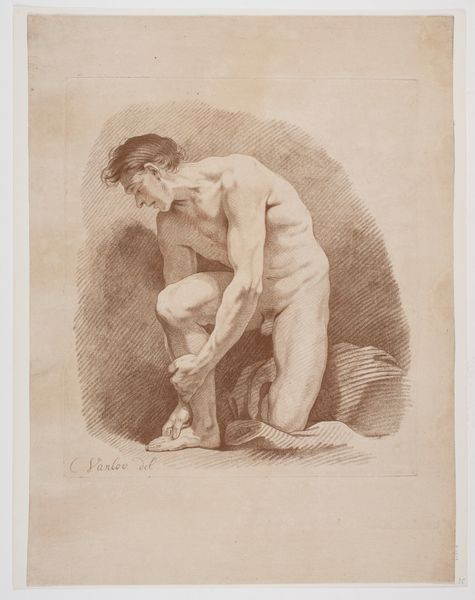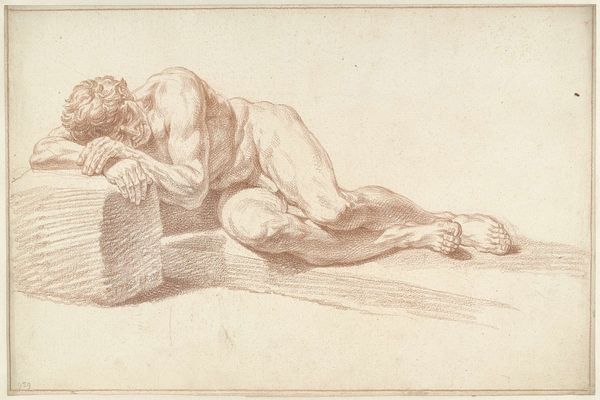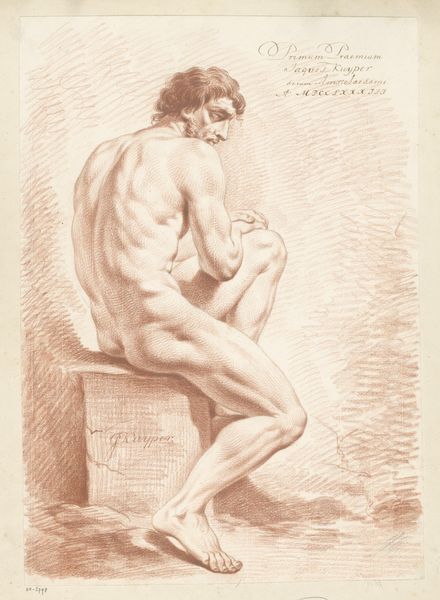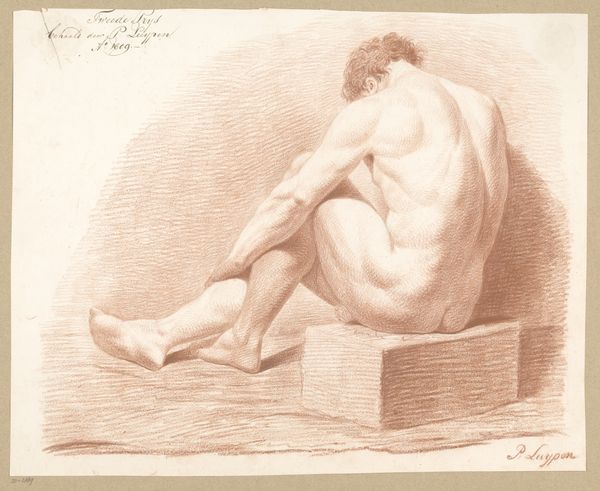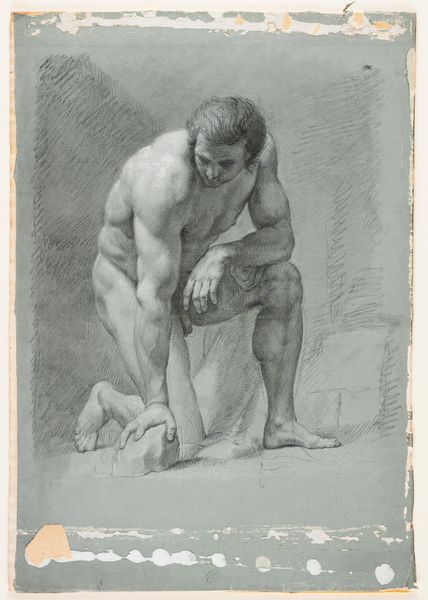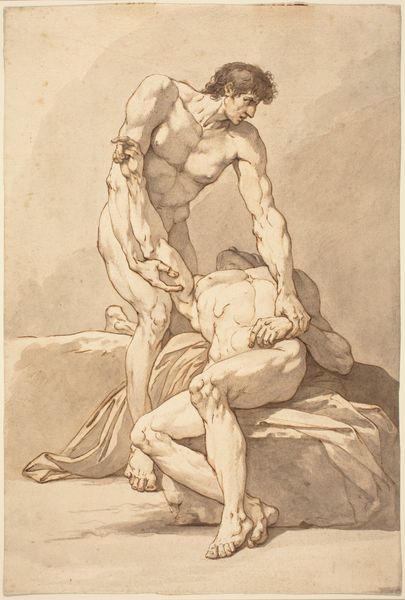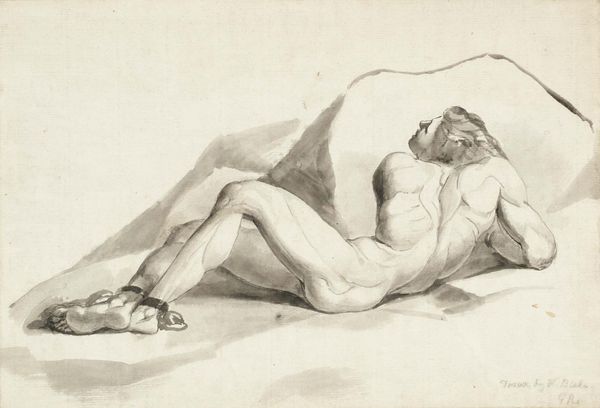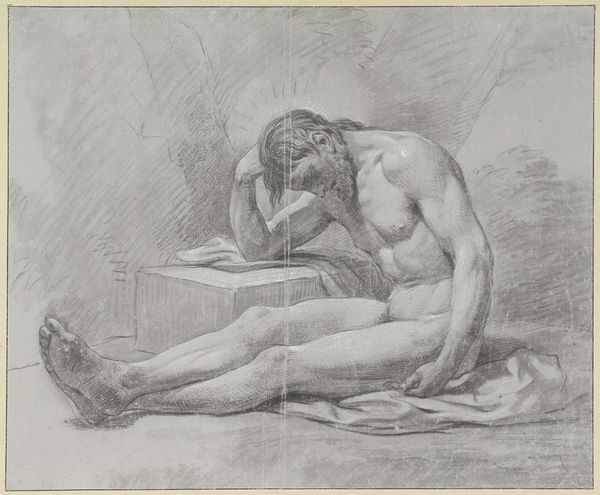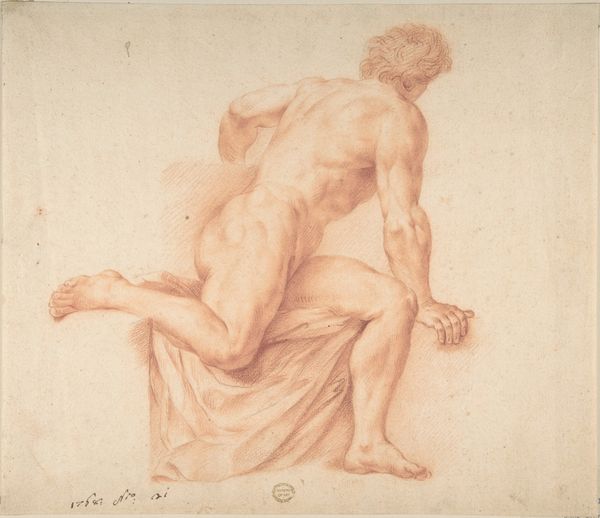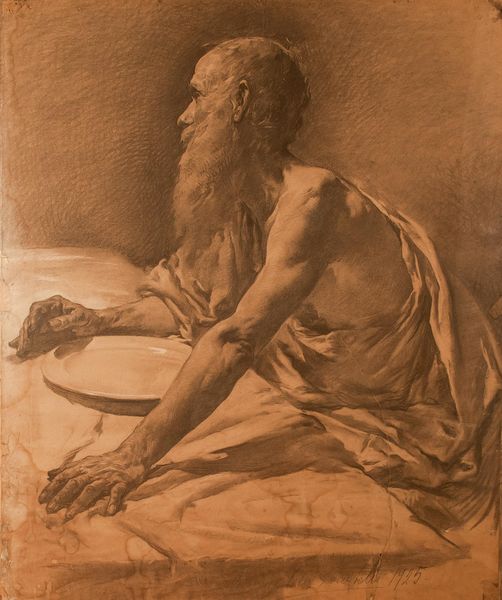
drawing, ink
#
drawing
#
classical-realism
#
figuration
#
ink
#
academic-art
#
nude
Dimensions: height 255 mm, width 298 mm
Copyright: Rijks Museum: Open Domain
Curator: Welcome. We're standing before "Achteroverliggend mannelijk naakt" an ink drawing attributed to Pieter van Loon, made sometime between 1811 and 1873. Editor: It's remarkably striking, isn't it? There's a sense of monumental scale despite likely being an academic study. The tones give it a very tactile, almost sculptural quality. Curator: Indeed. It is clearly a product of its time; one can read it as a figure burdened by the weight of history and perhaps social expectation. Note how the body is both powerful and passively reclining. Editor: I’m immediately drawn to the contrast in textures and the labour behind them. Look at the rendering of the fabric draped over the figure, versus the almost raw, unworked area in the background. The artist really considered their materials. Curator: Absolutely. The ink wash is applied with incredible skill to define form and volume. The composition suggests that it engages directly with the historical and political dimensions of academic art training during the early 19th century. Editor: How fascinating to consider the socioeconomic context here. This artwork would involve specific tools and materials—the ink itself, the paper, the space in which the artist was working, the time allowed for such labor. How did these impact its reception then? Curator: And, furthermore, consider the nude figure itself: the social power inherent in representing the male form, and how that plays into institutional power structures and notions of ideal masculinity. Editor: Right, so by examining not just the “what” but also the “how” of art making, we see more deeply into how materials themselves communicate and shape meaning in a broader social landscape. Curator: Precisely. This piece compels us to reconsider not only artistic talent, but its entanglement within much larger discourses and historical power dynamics. Editor: Reflecting on it, I think what resonates most is its demonstration of artmaking as not just about creating, but as a process involving labour, history and loaded materials. Curator: Yes. It truly serves as a potent lens through which to explore evolving social narratives woven within the fabric of artistic creation.
Comments
No comments
Be the first to comment and join the conversation on the ultimate creative platform.
